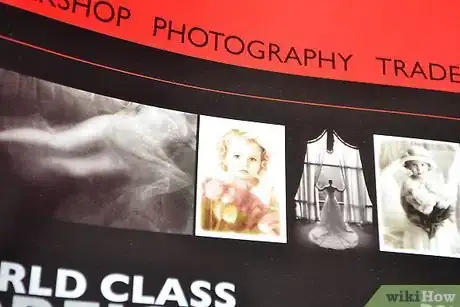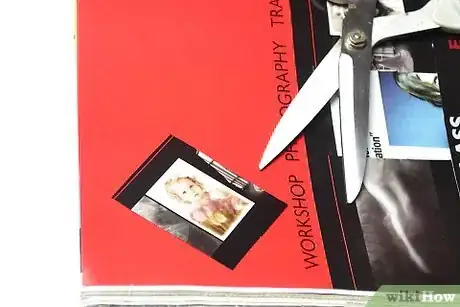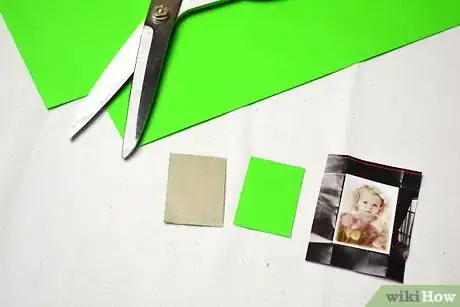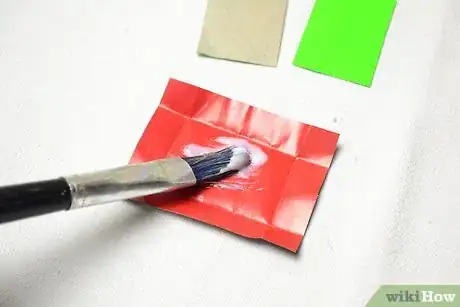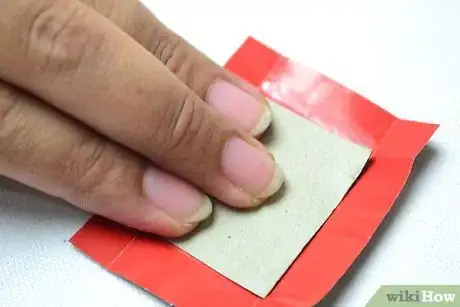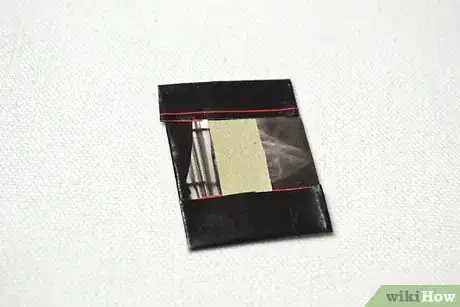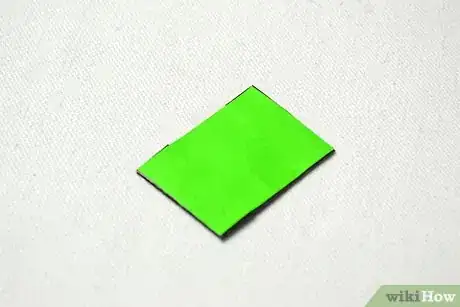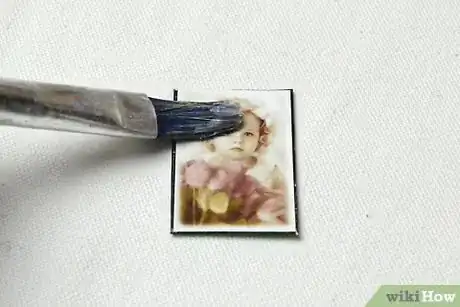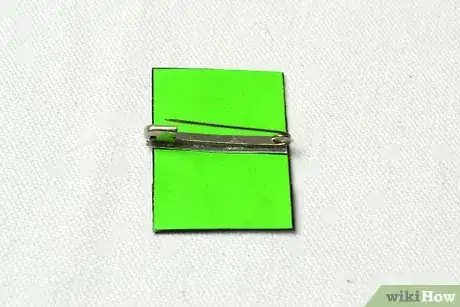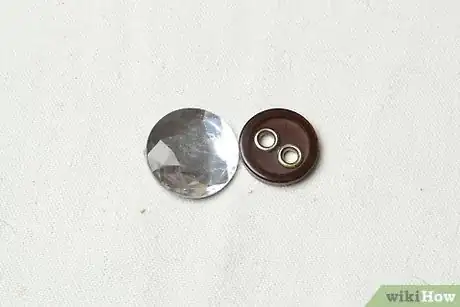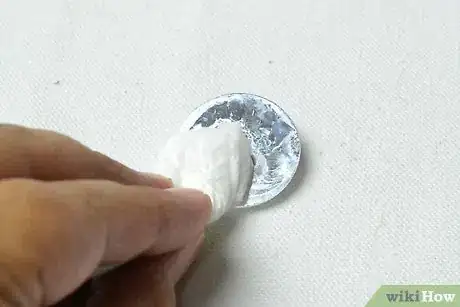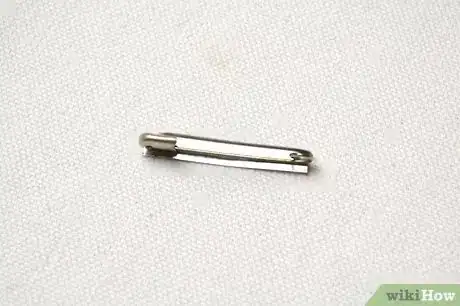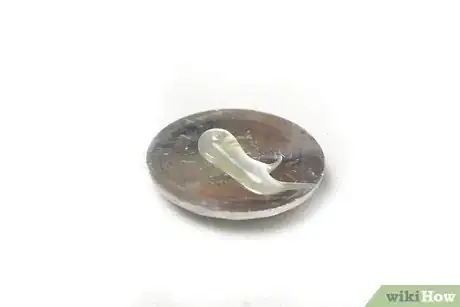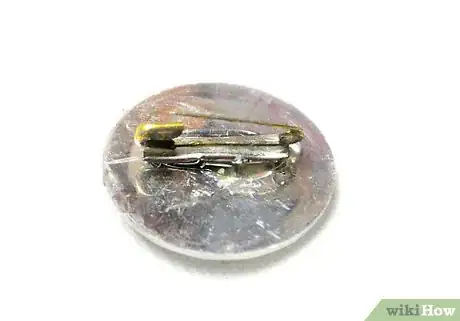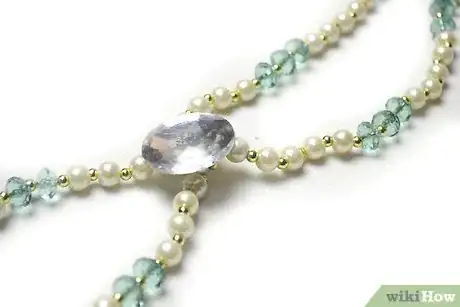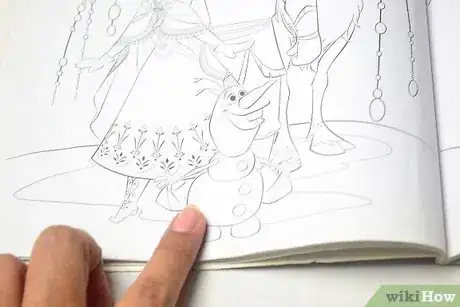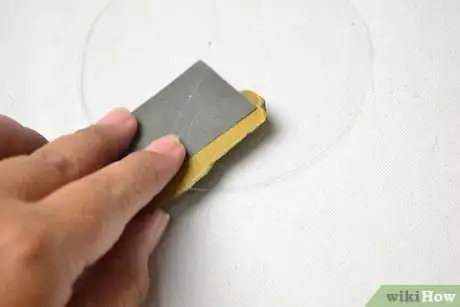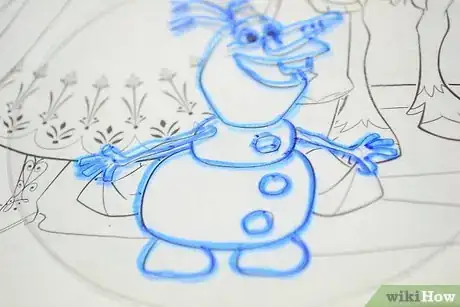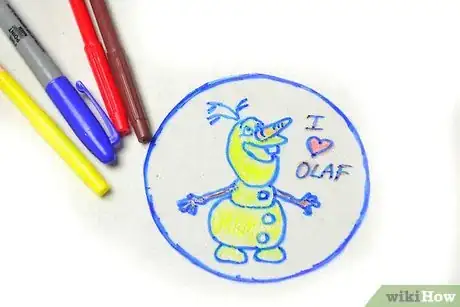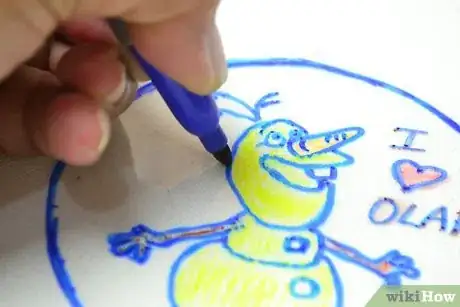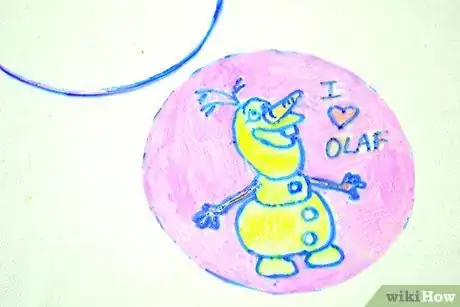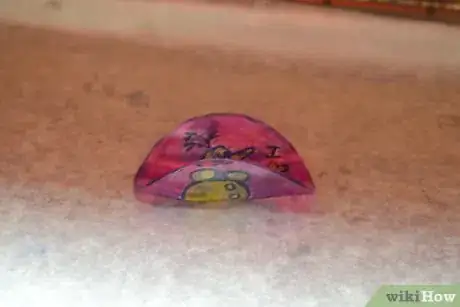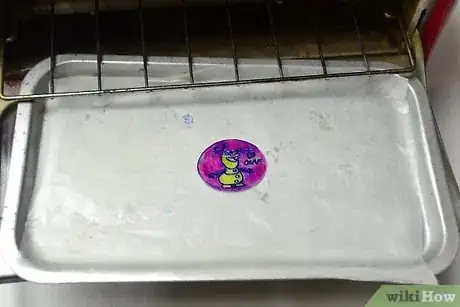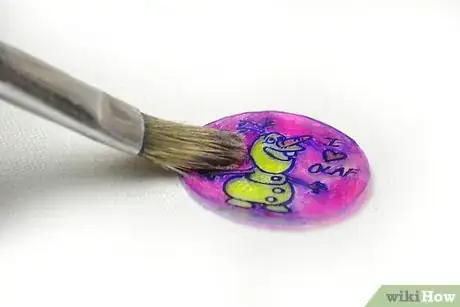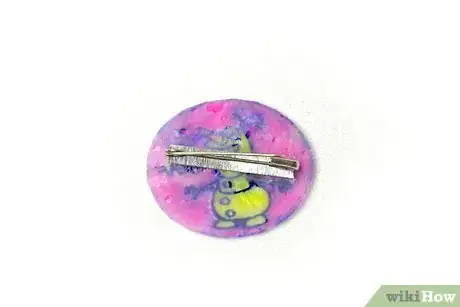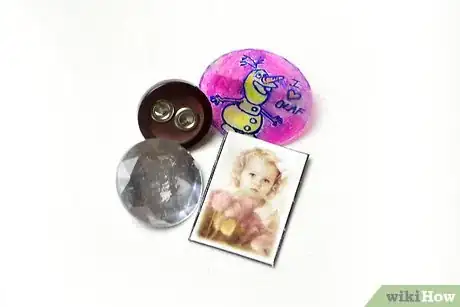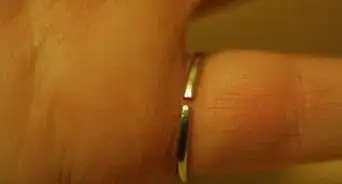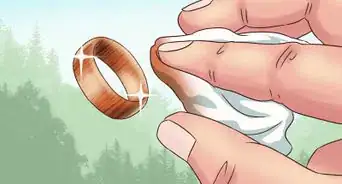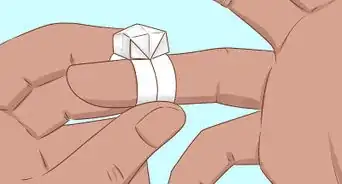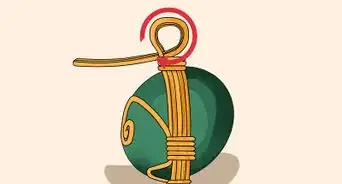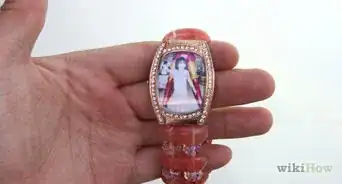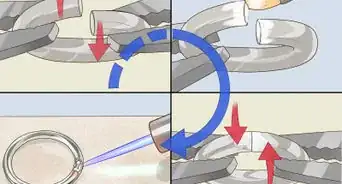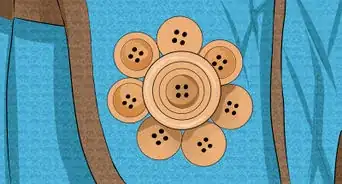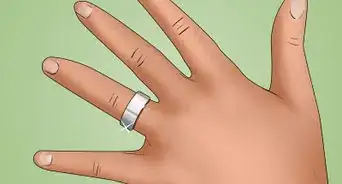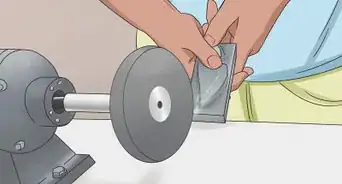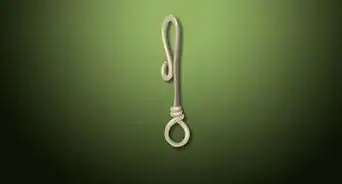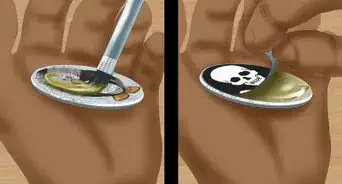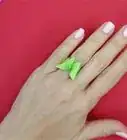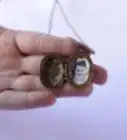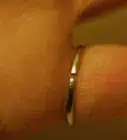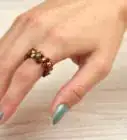This article was co-authored by wikiHow Staff. Our trained team of editors and researchers validate articles for accuracy and comprehensiveness. wikiHow's Content Management Team carefully monitors the work from our editorial staff to ensure that each article is backed by trusted research and meets our high quality standards.
This article has been viewed 51,354 times.
Learn more...
Pins are a great way to show off your individuality. Unfortunately, it can be difficult to find that perfect pin. Luckily, it is easy to make a pin using a few supplies from around your home and a flat backed safety pin. Once you know the basics, you can make all sorts of pins.
Steps
Making a Basic Pin
-
1Find a small, square-shaped image that you like. Aim for something that is about 1 inch by 1 inch (2.54 centimeters by 2.54 centimeters). If necessary, resize the image using an image editing program or a photocopier.
-
2Cut the image out, but leave a ½ inch (1.27 centimeters) border all around it. You will need this excess material to wrap around the back of your pin.Advertisement
-
3Cut a piece of colored paper and thin cardboard the same size as your image. The cardboard will make the base for your pin. The colored paper will make the back. The colored paper can be solid-colored, or it can have an interesting pattern.
-
4Cover the back of the image with glue. Turn the image over so that the back is facing you. Spread a thin layer of glue onto it. You can use a glue stick or school glue. If you are using school glue, you might want to apply it with a paintbrush.
-
5Press the cardboard onto the back of the image. Try to center the cardboard as much as possible. You should have a ½ inch (1.27 centimeters) border all around the cardboard.
-
6Wrap the edges of the image around the cardboard. Start with the corners first. Once you have them glued down, fold all four side over onto the back of the cardboard. This will give you some nice, folded seams.
-
7Glue the colored paper onto the back of the cardboard and let the glue dry. Coat the paper with glue, then press it onto the back of the cardboard. You can use a glue stick or school glue for this. If you are using school glue, you might want to apply it using a paintbrush.
-
8Paint over the pin using an acrylic sealer or decoupage glue. You can use any sort of finish you like: matte or glossy; glossy, however, will look the best. Paint the front first, let it dry, then do the back. This will "seal" your pin and protect it.
- If you are using a decoupage glue, you may need to apply 3 to 4 layers. Let each layer dry before you apply the next one.
- Acrylic sealers come in brush-on and spray-on form.
-
9Glue on the safety pin once the sealer dries. Draw a line of hot glue across the back of the pin. Quickly press the back of the pin down into the glue.
Making a Pin Using Found Items
-
1Find something small, light, and with a flat back. The item should be no larger than your thumb. Flat items are best, but you can use a slightly-raised item, such as a button or cabochon. Here are some items that make great pins:
- Cabochons
- Decorative buttons (such as coat buttons)
- Embroidered patches
- Metal bottle caps
- Wooden shapes
-
2Wipe the back of the object with rubbing alcohol. Soak a cotton ball or tissue with rubbing alcohol and run it across the back of the item. This will get rid of any oils or dirt that might prevent the glue from sticking properly.
-
3Find a flat backed safety pin that is a little bit narrower than your item. When you place the safety pin behind your found object, you should not see it sticking out.
-
4Draw a line of glue along the back of the pin. You can use hot glue, but super glue or epoxy glue will work even better.
-
5Press the back of the safety pin into the glue. Flip the object over, so that the back is facing you. Quickly press the safety pin onto the back. Try to align it horizontally, and make it as centered as possible.
-
6Let the glue set before you use it. If you are using hot glue, this will only take a few minutes. If you are using super glue or epoxy glue, this may take several hours.
Making a Pin Using Shrink Plastic
-
1Find a small, easily-traceable image that you like. Aim for something that is about 3 inches (7.62 centimeters). Remember, the image will shrink down to ½ to 2/3 of its original size by the time you are done.[1] You can use any sort of image you like, but simple outlines (like those from a coloring book) might be easier to work with.
- If the image is on your computer, you will need to print it out onto regular printer paper.
- You can resize the image using an image editing program or a photocopier.
-
2Consider sanding the shrink film if you plan on painting it. Use a fine grit sandpaper, and lightly buff the surface of the shrink film. This will help the paint stick better. It is not necessary for colored pencils or markers.
-
3Place the shrink film on top of the image, and trace it using a permanent marker. Try to go over the lines as smoothly as you can. If the shrink plastic moves around too much, you can tape it down to the table.
- If you can't find shrink film, you can use any type of number 6 plastic. It is usually found on take-out containers. Look for the recycling symbol on the container. There should be a number inside of it. If it is a 6, you can use it.
-
4Color your design. Try to stick within the lines as much as possible. If you go over the lines, don't worry; you will be re-outlining the piece again. If you are using acrylic paints, be sure to thin them down first using a little bit of water. This will give you a smoother finish. It will also prevent the paint from clumping up after you back it.[2]
-
5Go over the outlines with a permanent marker. If you colored your design using markers or paint, wait for everything to dry first, or it will smear.
-
6Cut the shapes out. You can use a pair of scissors or a craft knife to do this. Make sure that you cut right along the outline; try not to leave any white edges.
-
7Bake the shapes on a parchment-lined baking sheet according to the instructions on the package. If your package does not have any instructions, bake the shapes at 350°F (176.6°C) in a pre-heated oven until the pieces lay flat. This can take anywhere between 5 minutes and 35 minutes.[3]
- Don't worry if the pieces start to warp and curl while baking. They will eventually flatten back out.
- If you are using number 6 plastic, bake the pieces at 350°F (176.6°C) for about 3½ minutes.[4]
-
8Take the pieces out of the oven, and let them cool. If you want, you can bend them while they are still warm to give then an interesting shape.
-
9Seal the colored designs. You can use a spray-on or brush-on sealer. You can even paint on a few layers of a decoupage glue. Apply 3 to 4 layers; let each layer dry before you add the next one. This will give your pin a nice finish. It will also seal your art work and keep it from chipping.[5]
-
10Glue a flat backed safety pin onto the back of the shape. Draw a line of hot glue across the back of the safety pin. Quickly flip the shape over, and press the safety pin onto the back. Try to center it as much as possible.
-
11Finished.
Community Q&A
-
QuestionHow do I put a new image/piece of paper into an already existing pin?
 T. ChinsenTop AnswererWithout seeing the pin, it is difficult to determine the best method. The instructions explain how to cut and attach an image to card and then seal it. You can modify the shape and size of your image to match your pin. Simply follow the instructions and attach it to your pin. Use a jewelry glue like E6000 to prevent it from peeling away from the pin surface.
T. ChinsenTop AnswererWithout seeing the pin, it is difficult to determine the best method. The instructions explain how to cut and attach an image to card and then seal it. You can modify the shape and size of your image to match your pin. Simply follow the instructions and attach it to your pin. Use a jewelry glue like E6000 to prevent it from peeling away from the pin surface.
Warnings
- Hot glue will heat up your safety pin, so be careful when your gluing it down.⧼thumbs_response⧽
- Hot glue can cause blisters if you are not careful. If you are worried about this, consider using a low-temp hot glue gun instead of a high-temp one. It will be less likely to cause blistering.⧼thumbs_response⧽
Things You'll Need
Making a Laminated Pin
- Small image
- Colored paper (for backing)
- Thin cardboard
- Glue stick or school glue
- Acrylic sealer or decoupage glue
- Paintbrushes
- Flat backed safety pin
- Hot glue and hot glue gun
Making a Pin Using Found Items
- Found item
- Hot glue and hot glue gun
- Flat backed safety pin
- Rubbing alcohol
- Cotton ball or tissue
Using Shrink Plastic
- Shrink film or shrink plastic
- Permanent marker (black is recommended)
- Fine grit sandpaper
- Markers, colored pencils, or acrylic paint
- Paintbrushes, water, and paint pallet (if using acrylic paint)
- Acrylic sealer or decoupage glue
- Flat backed safety pin
- Hot glue and hot glue gun
References
- ↑ http://thehousethatlarsbuilt.com/2016/02/shrinky-dink-valentines-day-pins.html/
- ↑ http://persialou.com/2015/12/5646.html
- ↑ http://everydaydishes.com/creative-crafts/diy-shrinky-dinks-jewelry-craft/
- ↑ http://www.infarrantlycreative.net/reduce-reuse-recycle/
- ↑ http://www.rookiemag.com/2012/10/diy-decoupage-badges/
About This Article
To make a basic square pin, start by finding a small, square-shaped image, such as a photo from a magazine. When you cut out the image, leave a small border that you can wrap around the backing of the pin. Next, glue the image to a cardboard square of the same size and wrap image border around the cardboard. When that’s done, glue a colored paper square onto the back of your pin as a backing and seal the image with decoupage glue. Finally, hot-glue a safety pin to the back of your pin. Read on to learn how to make a pin out of found objects or shrink plastic!
